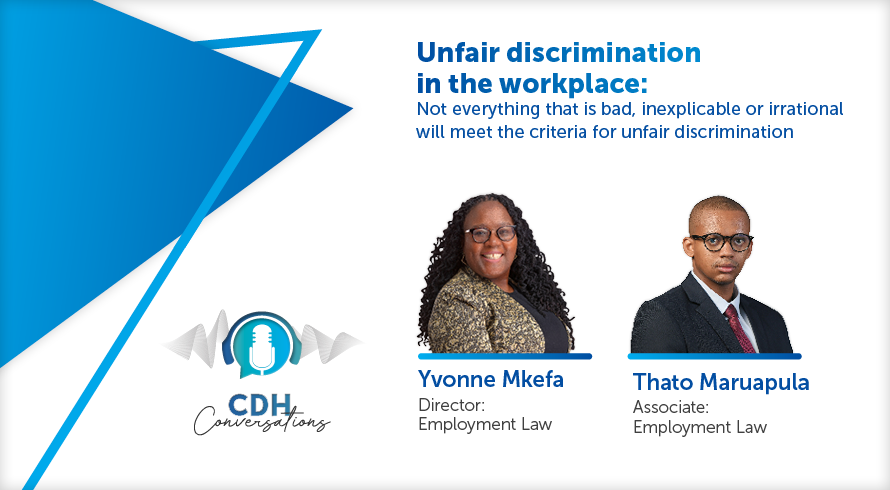Contentious international corporate restructuring ruling
The corporate tax rollover relief provisions contained in section 41 to section 47 of the Income Tax Act, No 58 of 1962 (Act) were recently expanded to cater for international corporate restructurings.
The South African Revenue Service (SARS) released Binding Private Ruling 178 (BPR 178) on 14 August 2014 where the applicant sought clarity on the tax
consequences of an international corporate restructuring in terms of section 42 (asset-for-share transactions) and s45 (intra-group transactions).
There are a number of interesting issues that are dealt with in BPR 178. However, the purpose of this article is not to discuss the entire ruling but to mainly consider the technical application of s45(3A) of the Act. In order to appreciate the issue, consider the following simplified facts to those contained in BPR 178:
- A South African tax resident company (SA Co) holds 100% of the issued share capital of a foreign company incorporated and tax resident in Germany (CFC 1).
- CFC 1 holds 100% of the shares in a foreign company incorporated and tax resident in another foreign jurisdiction (CFC 2).
- CFC 1 and CFC 2 are treated as controlled foreign companies by SA Co for purposes of s9D of the Act.
- The parties would like to enter into an “intragroup transaction” as defined in s45(1)(b) of the Act where CFC 1 sells its shares in CFC 2 to SA Co at market value in exchange for the issue of loan note equal to the market value of the CFC 2 shares, (the Loan Note).
- Subsequently, CFC 1 distributes the Loan Note to SA Co, with the result that the Loan Note is extinguished.
If s45(3A) of the Act applies to an “intra-group transaction”:
- CFC 1 shall be deemed to have acquired the Loan Note for an amount of expenditure of nil (ie the Loan Note will note have a base cost
equal to its face value); and - the subsequent distribution of the Loan Note and the extinction of the claim against SA Co could have adverse tax consequences for CFC 1, (which could be attributed to SA Co), bearing in mind that the base cost of the loan is deemed to be nil and one is dealing with a disposal being connected persons.
In order for s45(3A) of the Act to apply there must be, amongst others:
- an asset acquired by a transferee company (SA Co) from a transferor company (CFC1) in terms of an intra-group transaction;
- the purchase consideration which is funded by the transferee directly by the issue of debt (the Loan Note); and
- importantly, a debt issued by a company that forms part of the same group of companies as the transferee company or the transferor company.
The uncertainty whether or not s45(3A) of the Act is applicable in the circumstances mentioned above (and in BPR 178) mainly relates to the last point. In particular, it is noted that:
- for tax purposes, a group of companies is generally understood to included two or more companies where the one company holds directly or indirectly at least 70% of the equity shares of the underlying controlled group
companies; - the “group of companies” definition in s1 of the Act includes “foreign companies”. However, the s41 “group of companies” definition (which
generally applies to the corporate tax roll-over relief provisions) excludes foreign companies. The s41 group of companies definition is therefore narrower than the s1 definition; - to the extent that the wider s1 “group of companies” definition is applicable in the context of s45 of the Act (or the other corporate restructuring provisions), the legislation generally specifically refers to the broader definition in s1
of the Act (e.g. see paragraph (b)(iii) of the “intragroup transaction” definition or s45(4)(bA)); - the wording in s45(3A)(ii) of the Act simply refers to a debt issued by a company that forms part of the “same group of companies” as the transferee
company (SA Co) or transferor company (CFC 1); and - on the basis that s45(3A)(ii) of the Act does not refer to a group of companies “as defined in section 1 of the Act”, does it mean that s45(3A) of the Act is not applicable to a loan between CFC 1 and SA Co (which do not form part of the
s41 “group of companies”)? - alternatively, on the basis that there is a foreign “intra-group transaction” as defined in Paragraph (b), which requires the foreign equity shares be
disposed of in exchange for the issue of debt, must it follow that s45(3A) applies to foreign “intra-group transactions”? In BPR 178, which has similar facts to those described above, it was ruled that s45(3A) will not apply to
deem the loan to have a base cost of nil in the hands
In BPR 178, which has similar facts to those described above, it was ruled that s45(3A) will not apply to deem the loan to have a base cost of nil in the hands of the holder of the loan, and therefore the loan will have a base cost equal to its face value. As this loan is distributed up the line to the South African shareholder (eg SA Co), it was ruled that the cessionary in each case will then be able to access this face value as the base cost.
The exact basis upon which this conclusion was reached in BPR 178 is not necessarily clear from the ruling. However, if the conclusion is reached on the basis that s45(3A) of the Act does not apply to a Loan Note issued by a foreign company, which does not form part of a s41 group of companies, this ruling appears to be at odds with the statements by National Treasury in the Explanatory Memorandum on the Taxation Laws Amendment Bill, 2013 the (“EM”). According to the EM, s45(3A) of the Act was amended to clarify that the provision applies to both domestic and corporate reorganisations.
One of the other interesting issues that were highlighted in BPR 197 (which are not discussed in detail in this article) is the question whether, if from a German tax perspective a foreign German partnership is tax transparent for German corporate income tax purposes but not for German trade tax purposes, will that German partnership constitute a “foreign company”?
In considering this issue, it should be appreciated that a “company” includes any association, corporation or company established under the law of any country other than South Africa but does not include a“foreign partnership”(as defined). A “foreign partnership” is defined in s1 of the Act and typically includes an entity which is fiscally transparent in the country of formation or establishment.
To the extent that the German partnership in BPR 197 did not constitute a “foreign company”as defined (ie it was in fact a “foreign partnership”), it would not be possible to implement an “intra-group transaction” in terms of section 45 of the Act as one would not have a “group of companies” as defined in s1 of the Act.
Hopefully the discussion above highlights some of the complex issues that need to be considered when implementing international (and domestic) corporate restructurings and some of the difficulties taxpayers experience when interpreting the applicable legislation. Where there is any doubt, the advance tax ruling system does at least allow taxpayers the opportunity to approach SARS to obtain comfort on the tax consequences of the proposed transaction.
The information and material published on this website is provided for general purposes only and does not constitute legal advice. We make every effort to ensure that the content is updated regularly and to offer the most current and accurate information. Please consult one of our lawyers on any specific legal problem or matter. We accept no responsibility for any loss or damage, whether direct or consequential, which may arise from reliance on the information contained in these pages. Please refer to our full terms and conditions. Copyright © 2025 Cliffe Dekker Hofmeyr. All rights reserved. For permission to reproduce an article or publication, please contact us cliffedekkerhofmeyr@cdhlegal.com.
Subscribe
We support our clients’ strategic and operational needs by offering innovative, integrated and high quality thought leadership. To stay up to date on the latest legal developments that may potentially impact your business, subscribe to our alerts, seminar and webinar invitations.
Subscribe




